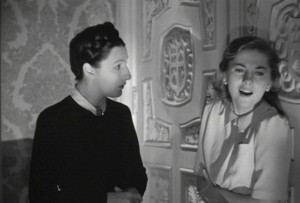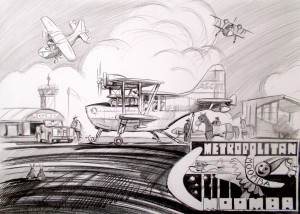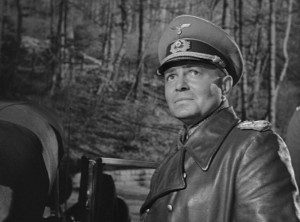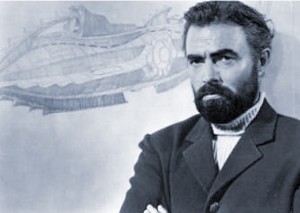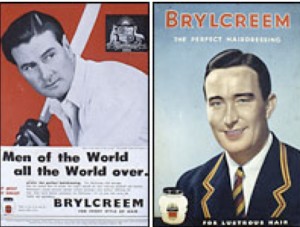AUSTRALIA’S MIDGET SUBMARINE: THE “LILLIPUTIAN”
In the early days of World War ll, Australia had little support from outside and few resources of its own with which to counter the threat of imminent invasion from the large Japanese forces facing its northern coast. This put considerable pressure on our then government to devise unorthodox and immediate strategies that might offer the least hope of levelling the balance.
Impressed by the exploits of the Japanese midget submarines at Pearl Harbour in 1941 and the attempted incursion of three such craft into Sydney Harbour a year later, the Royal Australian Navy requested Prime Minister John Curtin’s government to urgently undertake a program to deploy similar submarines to protect our northern coastline and to raid enemy shipping.
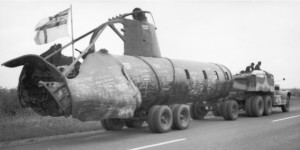
Japanese miniature sub indicating terrestrial capability. Sub later recomissioned HMAS Collins Mk 1.
While in peacetime economic and technical considerations might have seen Japanese shipyards invited to tender for the manufacture of such submarines, it was deemed more expedient during hostilities to design and build these vessels locally.
With impressive urgency, a government committee was established to investigate how this might be achieved affordably and efficiently, given the country’s limited manufacturing capacity. Tabled secretly, its report endorsed the feasibility of the project, subject to a number of recommendations.
It pointed out that the Clyde Engineering works in Sydney was then constructing large boilers for steam locomotive engines and it was thought that, with little modification, these could be quickly adapted as ready-made hulls for midget submarines to be operated by a crew of two. Apart from the internal fixtures and electric motor, it would only be necessary to put a rounded nose at one end of the hull and control fins at the other, with a hatch and periscope in the middle.
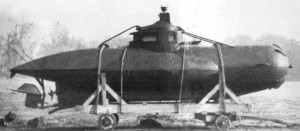
Initial prototype. Note excellent fully amphibious capability with ‘Roadstar Wheels’, offering scintillating performance: 25 mph land, 15 knots submerged.
Unfortunately, when a mock-up model was ready for evaluation it was found that the minimum of internal fittings still left insufficient room for even a slightly-built Australian matelot. It had not been adequately considered whether such tiny quarters, which could have barely accommodated a small-framed Japanese, might be impossibly cramped for an Australian.
At a point where the whole enterprise seemed stalled, the project’s Designer-in-Chief, Mr. Bruce Horrie, came up with a possible solution.
As he put it in his 1964 book on the project, “The Lilliputian Project”, ’The thought came to me that if this was a midget submarine, then why not crew it with… midgets? In that way we would have an entirely practical solution that would allow us to stick with the existing dimensions and production limitations.’

Lilliputian project Officer. Major General, (retd) Bruce Horrie. On secondment to RAN whilst developing the ‘War winning weapon”.
Accordingly, construction of a working model of the submarine (’The Lilliputian’) was made a top priority and Clyde Engineering ran two shifts daily for five months to meet the deadline of delivery of a full operating submarine by November 15, 1942. At the same time, a frantic hunt began to locate suitable midgets or dwarfs to be trained as crew members.
‘At first,’ explained Horrie in his book, ‘we insisted on young men with active service records in either the RAN or the merchant navy. However, we were soon convinced of the unlikelihood of midgets having ever passed the physical requirements test for aspiring seamen, given the recruiters’ mandatory height requirement of five feet two inches.’
‘On the other hand, this also made it likely they were still in civilian life and therefore potentially available to us.’
Accordingly, Horrie’s recruiting team set to work. Newspaper advertisements were placed with this message: ‘Fit & Young, But Too Short for the Forces? Here’s Your Chance To Serve Your Country!…). With no response to this patriotic call, they secured permission to check out the few traveling circuses still allowed to operate in wartime Australia. Eventually, they found two, rather reluctant, midget clowns in Tapperly’s Circus and O’Reilly’s Big Tent Extravaganza, respectively.
The first priority was to see that the midget mariners-to-be could fit into, and operate, their designated craft.
‘We were delighted to discover that Bozo and Andy (the midgets’ names) were perfectly at ease in their vessel and intrigued by the various controls at their disposal. In fact, they seemed very eager to learn how to operate them,’ said Horrie. ’So, straightaway we launched them into their intensive training as midget submariners.’
‘Individually, they each performed very well, showing an equal technical proficiency and adroitness – and, apart from frequent giggling fits, were well able to carry out their duties under pressure with remarkable aplomb.’
However, as Horrie emphasised, any successful mission in enemy waters was always considered to depend critically upon the crew’s ability to work as a coordinated and cooperative team.
‘This was precisely where we struck trouble – and it was evident from an early stage. Bozo and Andy were destructively competitive – reflecting not only the intense competition between their respective circuses, but also their bitter personal professional rivalry over the annual award for Australia’s Funniest Clown.’
‘During test voyages in Sydney Harbour, one would refuse to talk to the other, or would sabotage their control settings. A whoopee cushion on a seat making a rude noise would be the least of their misbehaviour.’
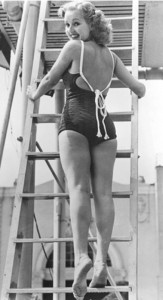
Betty Grable, demonstrating escape route
‘Once, Andy could hardly control the craft after Bozo fixed a picture of Betty Grable to the front lens of the periscope used to steer at shallow depth. Although many laughed at this at the time, it was a potentially lethal jape.’
‘From the very start, they constantly clashed over who was the submarine’s skipper. Often this led to an unseemly scuffle in which the peak of the captain’s cap was torn off. Some sort of simmering truce was achieved only when we settled for alternating seniority after every five days of active duty.’
’The only times when they teamed together and worked in concert was when they decided to inflict anarchy upon the rest of us,’ complained Horrie in his book.
‘During one surface voyage they created havoc by letting off a series of Chinese firecrackers in the submarine’s torpedo tube. The smoke and noise prompted an accompanying fire tender vessel to draw up alongside and spray down the sub.’
‘At another time, while moored alongside a Sydney wharf, they leapt out of the sub’s hatch with their faces made up oriental-style and wearing sailor jackets with Japanese characters inscribed on them. The fact that these malevolent-looking midgets were also brandishing outsized samurai swords caused great consternation among onlookers standing on the pier. This panic was not even alleviated when Bozo and Andy began hurling plates of whipped cream at one another!’
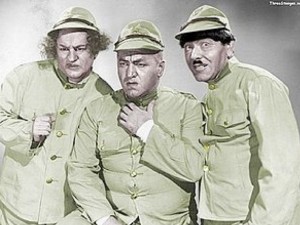
Andy and Bozo, rhs, demonstrating effectiveness of Japanese disguise. Photograph taken before whipped cream incident. Unknown individual lhs attributed as replacement dwarf in the event of hari kiri by aforementioned.
At last, with signs that the war was finally turning in the Allies’ favour, the plans to harry Japanese shipping with midget-crewed midget submarines was shelved – to the general relief of all concerned – and Clyde Engineering turned its attention to more pressing priorities.
And what was the fate of Australia’s one and only operational midget submarine?
According to Bruce Horrie, ‘The bizarre saga of the “Lilliputian” was deemed so embarrassing to all the parties involved that the vessel was immediately taken outside Sydney Heads and scuttled in deep water. That is why today the only midget submarine you will see at Canberra’s War Museum is Japanese!’
‘At the same time, before sending off Andy and Bozo to continue their inter-circus feuding elsewhere, the authorities forced them to sign an Official Secrets Act document binding them to 10 years’ secrecy under the threat of lengthy imprisonment should they once mention their brief wartime careers.’
Sorry, a late editorial correction…
‘From the very start, they constantly clashed over who was the submarine’s skipper. Often this led to unseemly scuffles, during one of which the peak of the captain’s cap was torn off. Some sort of simmering truce was achieved only when we settled for alternating seniority after every five days of active duty.’







